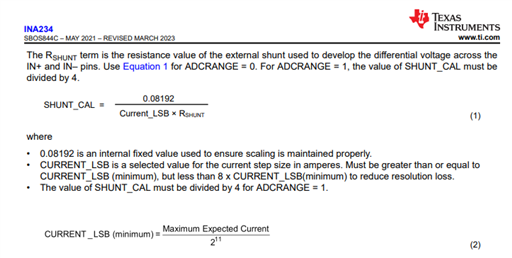Hi
I am using 4 INA234 in my design on the same i2c bus. cant get logical reads from shunt voltage, power and current register that will make sense with external power supply measurement.
for :
20mohm shunt register assembled on board
MAX current 0.75A
Current threshold 0.7A
we calculated 1000h for the calibration register
we read:
shunt voltage register [1h] 0280h
bus voltage register [2h] 03c0h - from calculation we get 1.536V - good result
power register [3h] 0168h
current register [4h] 1d10
we measure:
bus voltage = 1.6V
current = 457mA
please explain how to translate the reads to get the measured current.
regards
Neli Janssen




